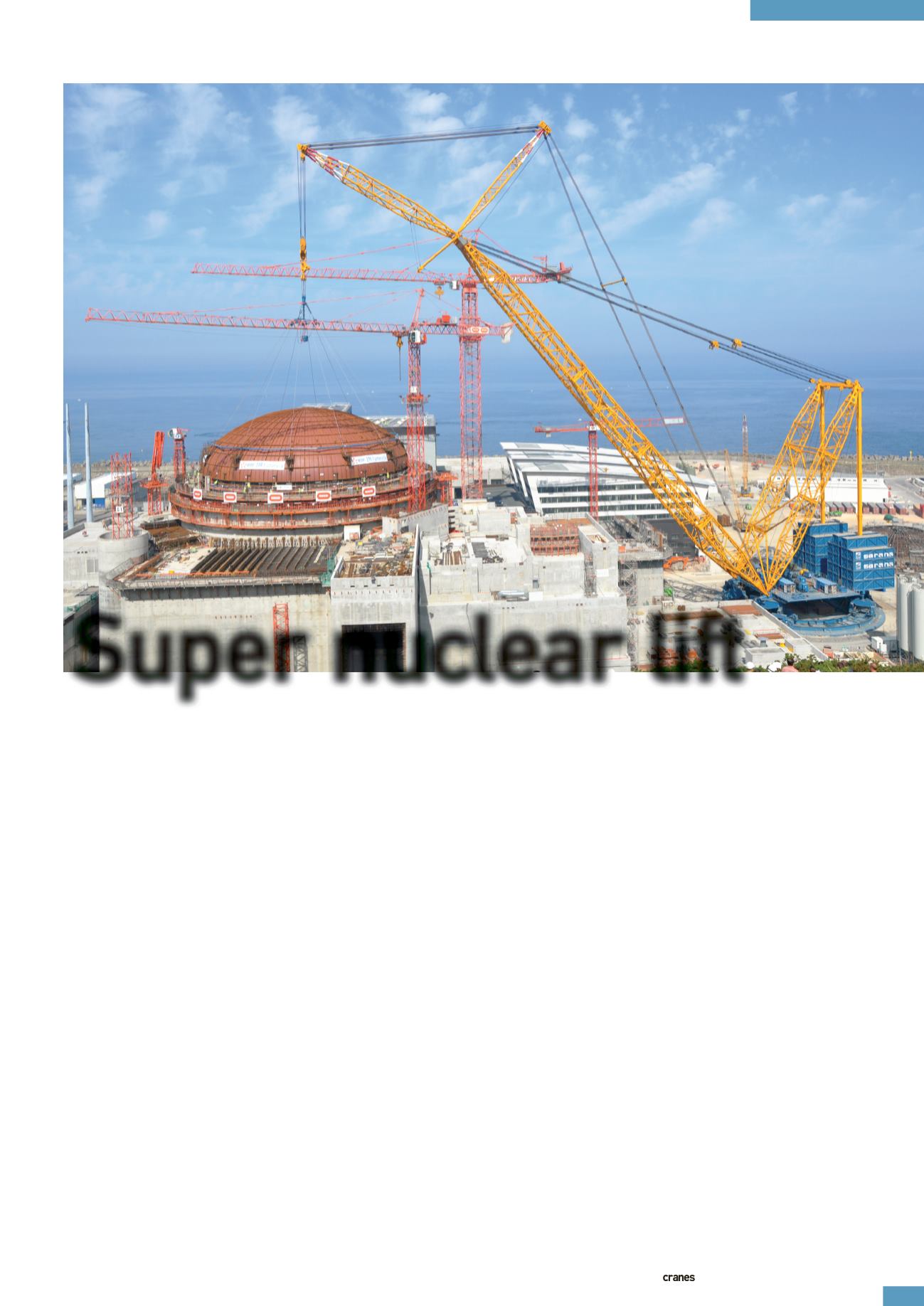
35
INTERNATIONAL AND SPECIALIZED TRANSPORT
■
OCTOBER 20
13
International lifting and transport specialist Sarens from Belgium used its 3,200 tonne
capacity SGC-120 super heavy lift crane for a lift weighing hundreds of tonnes – at well
over 100 metres radius – on a nuclear power plant project in France.
IC
reports
example, rock and sand, once at the jobsite.
This method of creating counterweight
without having to transport it is used to
reduce transport weight and save money.
With the crane components delivered
to the job site it took six weeks to assemble
the crane. The SGC-120 was assembled
in a space measuring 50 x 200 m. It has
a base of 44 x 44 m and was configured
with a 170 m boom. A new heavy duty jib
was built especially for this project to lift
up to 1,500 tonnes at 40 m radius. Two
auxiliary cranes, a Terex Demag CC 2800,
configured with a SH/LH 78 m boom and
a 250 tonne Sumitomo SCX2500 crawler
crane, were used during the assembly.
“A number of smaller hydraulic cranes
were also used,” explained Steven Sarens,
Sarens sales manager. “We also had some
forklifts and a 100 tonne telescopic crane.”
Other challenges that had to be taken
into consideration included slinging, which
had to be pre-engineered due the size and
shape of the reactor head.
F
or its first job in Europe, Sarens’
SGC-120 super heavy lift crane
completed a heavy and long
radius lift at a nuclear power site in
Flamanville, France.
International lifting and transport
specialist Sarens, based in Belgium, used
the 3,200 tonne capacity giant crane to
install a reactor head on top of a new
building on site. The nuclear reactor head
weighed 350 tonnes and was lifted at a
radius of 140 metres.
For Sarens the main challenge was
getting the crane to the site. The crane
was shipped from China, where it had
been working on a Cosco oil platform
project (
IC
December 2012, pages 17 and
20). It landed at the port of Cherbourg in
France before being transported on trucks
by road to the Flamanville site. In total
160 containers were used to transport
the components of the crane, including
several which were then filled with around
3,000 tonnes of local ballast material, for
SITE REPORT
Super nuclear lift
Main job
With the crane assembled the team carried
out a test lift before completing the main
lift. Other lifts for the crane included the
installation of all the internal overhead
cranes for the reactor building.
“After setting up the crane we installed
the girders and the trolleys of the overhead
cranes inside the reactor – these were the
small lifts. The main lift was the reactor
head that had to be installed,” explained
Steven Sarens.
Because of the location of Flamanville,
on the coast, wind speed was a primary
concern and the team had to wait for
perfect conditions before the lift could be
carried out. With the weather on their side
the lift took one day to complete.
The crane has already been
disassembled and is due to be transported
back to the port of Cherbourg where it will
be shipped to a site in Indonesia. There the
crane will be used to install a vessel at a
petrochemical project.
■
The Sarens SGC-120 super
heavy lift crane on its first
job in Europe, lifting the
nuclear reactor head at
Flamanville in France


